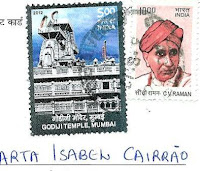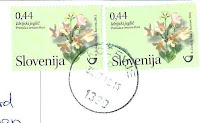Everytime i trade with Emerich, i choose a few castle cards, i can get enough of these.
Photo bt Ivan Rilich
The ruins of the Dívčí Kámen castle are located near Třísov village 9 km to the north-east of Český Krumlov.
The Rožmberk family founded the castle in 1349 and the construction took 40 years. The castle was not occupied for long - in the first half of the 15th century it was fortified, but in the 16th century its owner Petr Vok of Rožmberk decided not to maintain it anymore and it gradually dilapidated.
Photo by Ivan Rilich
Helfenburk castle is situated 7 km west of the small town Bavorov. Very well preserved remains of the castle tower on the rock 680 m a.s.l. and it offers nice views of the country.
The construction was agreed by King Charles IV in 1355 and a monumetal castle arose here. In the second half of the 15th century an extensive settlement round the castle was founded. The castle's owners often changed and several times it became property of the founders - the Rožmberks. They were the last occupants of Helfenburk. After finishing their new Renaissance residence - kratochvile chateau - at the end of the 16th century, the castle was abandoned. None of its later possesors lived there.
The castle had the semicircular layout. Its dominant feature - a round tower with nice views of the country - has been preserved up till the present day. The remains of the second round tower, palaces and walls with a moat have been preserved too. - in:
http://www.jiznicechy.org/en/index.php?path=hrad/helfen.htm
Photo by Ivan Rilich
The remains of the Vítkův Hrádek ("Vítek's Castle") lie about 5 km east of the town Jindřichův Hradec in the neighbourhood of the small village Blažejov above the valley of Hamerský Potok (Hamry Brook).
The history of the castle (probably one of the oldest in South Bohemia) dates back to the first half of the 13th century when it was founded by Lords of Jindřichův Hradec. In the second half of the 13th century it belonged to the Order of Teutonic Knights. The castle was abandoned in the 15th century and it has never been reinstated.
Only the small remains of walls and the castle moat have been preserved up till the present day. - in: http://www.jiznicechy.org/en/index.php?path=hrad/vitek2.htm
Photo by J. Schneider
Kost Castle is located in the Jičín District.
Kost Castle lies in Northern Bohemia, specifically the region Bohemian Paradise (Český Ráj) It was first proposed by Beneš von Wartenberg in 1349 as a possible construction site and was completed by his son Peter von Wartenberg. It retains most of the original features and is overall very well preserved and maintained.
The castle is known for its so-called "White tower" (Bílá Věž). In about 1414 the family of Zajíc von Hasenburg moved there; later the family of Schellenberg (1497 - 1524), Lobkowicz (till 1576) and others; in this time some more buildings were built near the castle and joined to it.
Unlike most other castles in Bohemia, it does not lie on a hill, but on a spit between two brooks. Another peculiarity is the tower, which has a trapezoid-like ground-plan. The trapezoidal tower has the corners facing the areas of most likely catapult attacks. This is to make the missiles glance off the tower walls instead of hitting it headon thereby minimizing the damage. - in: wikipedia
Photo by J. Schneider
Trosky Castle (Czech: Hrad Trosky) is a castle ruin located some 10 km south of Semily, Liberec Region. It is one of the most famous Czech castles and is situated on the summits of two basalt volcanic plugs. On the lower peak (47 m) is the two-storey structure called Baba (Old Woman), and on the higher outcrop (57 m) is the four-sided structure known as Panna (Virgin). The castle is a landmark which cannot be missed in the countryside known as Český ráj (Bohemian Paradise).
The castle was established by Čeněk of Vartenberk in the second half of the 14th century. Two towers were constructed, one on top of each rock, and various residential buildings and outhouses erected between them. Three rings of fortified walls protected the complex.
After that several noble families owned the castle, although its significance declined. In 1648, during the Thirty Years' War, it was burned down completely by the Imperial Army and left in ruins.
In the 19th century a greater degree of interest was shown and romantic modifications were made to the ruins of the castle. It was decided to create a staircase leading to the Panna tower. Work was begun in 1841-43, but was not completed. - in: wikipedia
Photo by J. Schneider
The ruins of Frýdštejn Castle can be found in the Liberec Region, near the town Turnov. It is one of three castles in Jablonec nad Nisou District. A typical rock castle, it lies on the upper end of a long sandstone rock ridge, next to the village of Frýdštejn. The castle dominates the nearby Jizera river valley and the old trade route from Turnov to the north.
Frýdštejn was constructed during 14th century.
The castle had changed owners several times. After a sale in 1556 it lost its function as a watchtower and at the end of 16th century it was no longer inhabited. During the Thirty Years' War marauders, deserters, and fugitives of every kind found shelter here.
Today the castle is owned by the village Frýdštejn, which preserves its current state. - in: wikipedia



.jpg)

.jpg)





.jpg)




.jpg)
.jpg)
.jpg)



.jpg)


.jpg)
.jpg)

.jpg)


.jpg)

.jpg)
.jpg)

.jpg)


.jpg)



.jpg)


.jpg)
.jpg)
.jpg)

.jpg)

.jpg)

